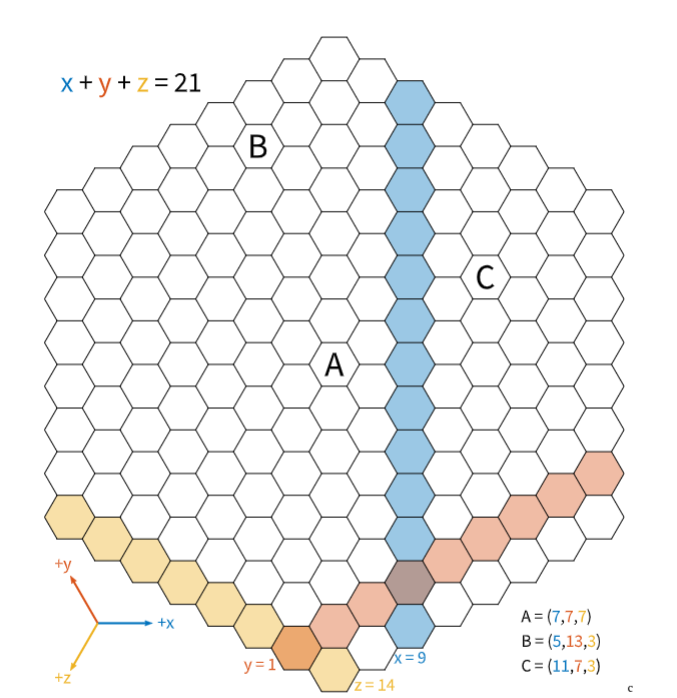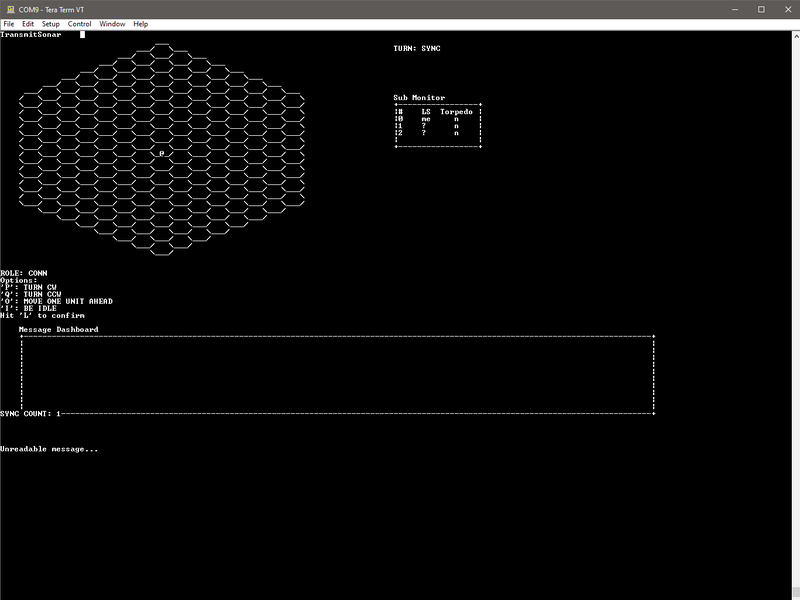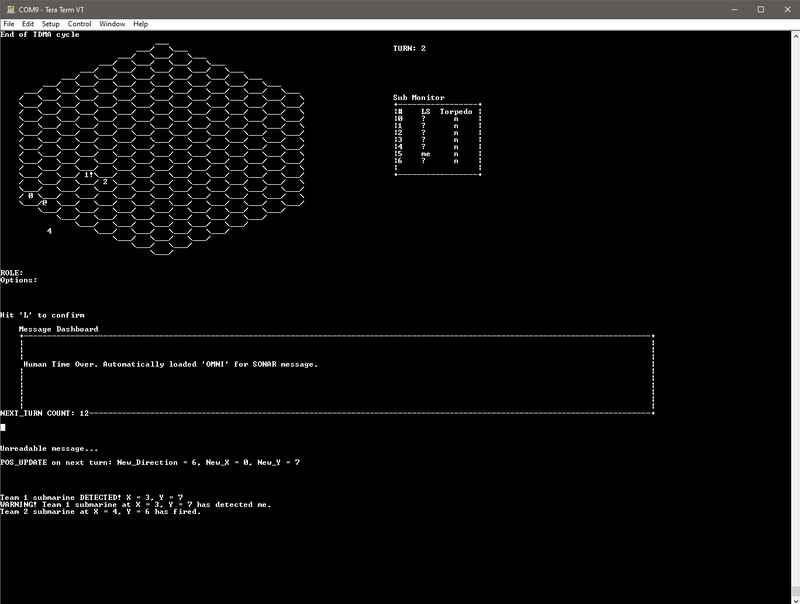The Hunt for Red Mithuna |
The Hunt for Red Mithuna
Mars, now somehow covered in water, has become the front line for conflict. Battles take place at sea in submarines over the few resources left on mars. These submarines locate, attack, and sink enemy submarines for control of mars
Game Overview
Each submarine is split up into three substations: the CONN, SONAR, and TORPEDO each operated by a different member of the team. The goal of the submarine is to locate and sink enemy submarines. Each station communicates with the other stations within its submarine and other submarines through audio tones over the internet.
Gameboard
The ocean gameboard is made up of hexagon squares with which the submarines move across.
Submarine RolesEach submarine is broken up into 3 roles controlled by individual team members: the CONN, SONAR, and TORPEDO
CONN - Console of Naval Navigation
The CONN is responsible for navigating the submarine. On each turn, it can make one of three possible moves:
TURN - Turn the submarine 60 degrees clockwise or counter-clockwise MOVE - Move the ship one unit along its current heading IDLE - Do nothing Whenever the position is updated, it must send the new coordinates of the submarine to the other two stations. The CONN must also reply to DETONATION and ECHO commands from other submarines as it is in charge of the master position. The CONN cannot repeat the same action twice in a row, except for IDLE SONAR - Sound Navigation and Ranging Station
The SONAR is responsible for detecting the presence of other submarines in the game. On each turn, it can make one of the three possible moves:
OMNI - Sends a PING that all submarines within 3 cells along any axis must respond to with an an ECHO. This submarines location is also revealed to the PINGED submarine DIRECTED - Sends a ping that all submarines along the current heading and within 6 cells must respons to with an ECHO. This submarines location is also revealed to the PINGED submarine. IDLE - Do nothing Whenever the SONAR receives a position update from the CONN, it must update its position. Whenever it receives a PING from an enemy submarine, it should check if it is in range of the submarine. If the SONAR should be detected, it must send an ECHO to reveal its location to the enemy sub and it can reveal the location of the pinging submarine to the operator. The SONAR station cannot take the same action two turns in a row. TORPEDO - Tactical Ordained Range Potatoes with Extremely Disastrous Output
The TORPEDO is responsible for sinking other submarines. On each turn, it can make one of the two possible moves:
FIRE - Fire a torpedo along the current submarines heading at a set cell IDLE - Do nothing When a FIRE action is taken, the TORPEDO sends a LAUNCHED command containing the location of this submarine. Then, two turns in the future, it sends a DETONATION at the predetermined target cell chosen when fire was taken. If a submarine is in this location, it will be destroyed and return a HIT command and the TORPEDO station can display this to the operator. The TORPEDO may not use the FIRE action while a missile is still in the water. |
Communication
Communication between stations and submarines occurs using frequency modulated audio tones. These audio tones are sent over the internet through the application Mumble and the stations have a speaker and microphone for sending/receiving signals. Four different frequencies correspond to four different dibit (two bit) data messages:
1000 Hz = 00
1250 Hz = 01
1667 Hz = 10
2500 Hz = 11
The message sent by each station must follow the below framing diagram. The message includes a start deliminator to detect the start of the message, a turn dibit to ensure every station is on the correct turn, the address of the station sending the message, the activity and data of the message, and a checksum to ensure the message was read correctly. This message is send at a rate of 10 dibits/sec and takes a total of 1.3 seconds total including the quiet time at the end of the message.
1000 Hz = 00
1250 Hz = 01
1667 Hz = 10
2500 Hz = 11
The message sent by each station must follow the below framing diagram. The message includes a start deliminator to detect the start of the message, a turn dibit to ensure every station is on the correct turn, the address of the station sending the message, the activity and data of the message, and a checksum to ensure the message was read correctly. This message is send at a rate of 10 dibits/sec and takes a total of 1.3 seconds total including the quiet time at the end of the message.
Documents
|
| ||||||||||||
Gameplay
The Piccadilly Circus submarine competed in the full match consisting of 7 submarines and a smaller scrimmage of 3 submarines. In both cases, we were able to meet all the requirements of the game and were the last sub swimming in the last scrimmage.
A Close View of Remote SPDL (Smart Product Design Lab) ...







